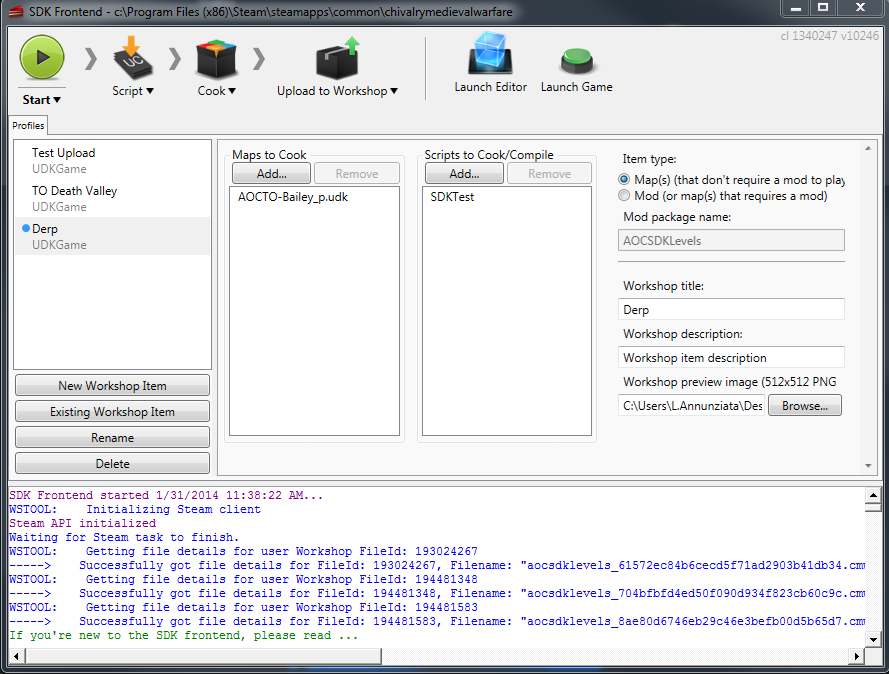Uploading a Map or Mod to the Steam Workshop
If a map or mod is uploaded to the Chivalry: Medieval Warfare Steam Workshop, people will be able to find, rate, and comment on it. Perhaps more importantly, server operators will be able to download the map from Steam, and any users who connect to servers with the map will automatically download it from the Workshop. This is pretty big for getting people to actually play your content.
Workshop updates
Uploading:
After you have created your map, it is time to upload it to the steam workshop. Thanks to the SDK Frontend tool that Torn Banner provides, this process is relatively painless.
Step 1:
Open the SDK Frontend. To do so, double click Chivalry: Medieval Warfare. On the launcher, click on 'Launch Editor'
This is the SDK Frontend
Step 2:
To create a new upload profile, click on 'New Workshop Item'. (If you want to upload over top of an item you uploaded previously, use 'Existing Workshop Item')
Step 3:
Under 'Maps to Cook' select 'Add...' and it will bring up a list of Maps that are located in you local /ContentSDK folder. If you are only Compiling a mod, you can skip this step and instead disable the cook packages feature in the top bar.
Step 4:
If your mod requires scripts, go Under 'Scripts to Cook/Compile' select 'Add...' and it will bring up a list of Maps that are located in you local /Development/Src folder. If you are only Cooking a map, you can skip this step and instead disable the compile scripts feature in the top bar.
Step 5:
Select the Item type
Step 6:
Give your Item a Workshop title, a description, and a preview image. The title and description can be changed on the Workshop page; you need to reupload to change the preview image, though.
Step 7:
Click the start button in the top left and wait for your map/mod to be cooked/compiled, then uploaded to the workshop.
Open Steam and browse to Chivalry's Workshop. If you click "Your Workshop Files" you should see your nice shiny new map/mod package.
Click on the item to get to your options.
And to adjust the description, title, images, and whether or not it is visible to other users (they are visible by default), use the Owner Controls.








